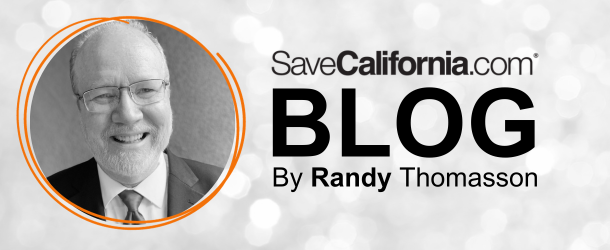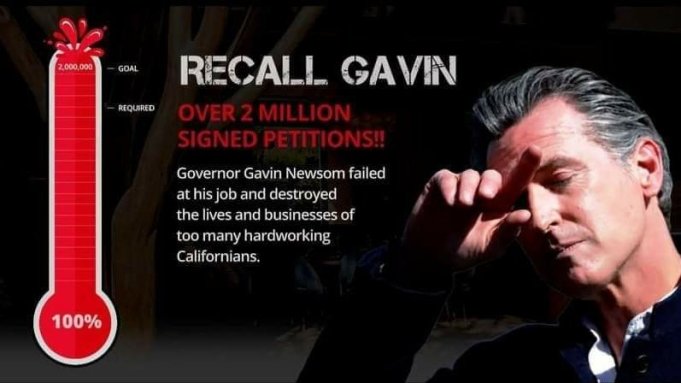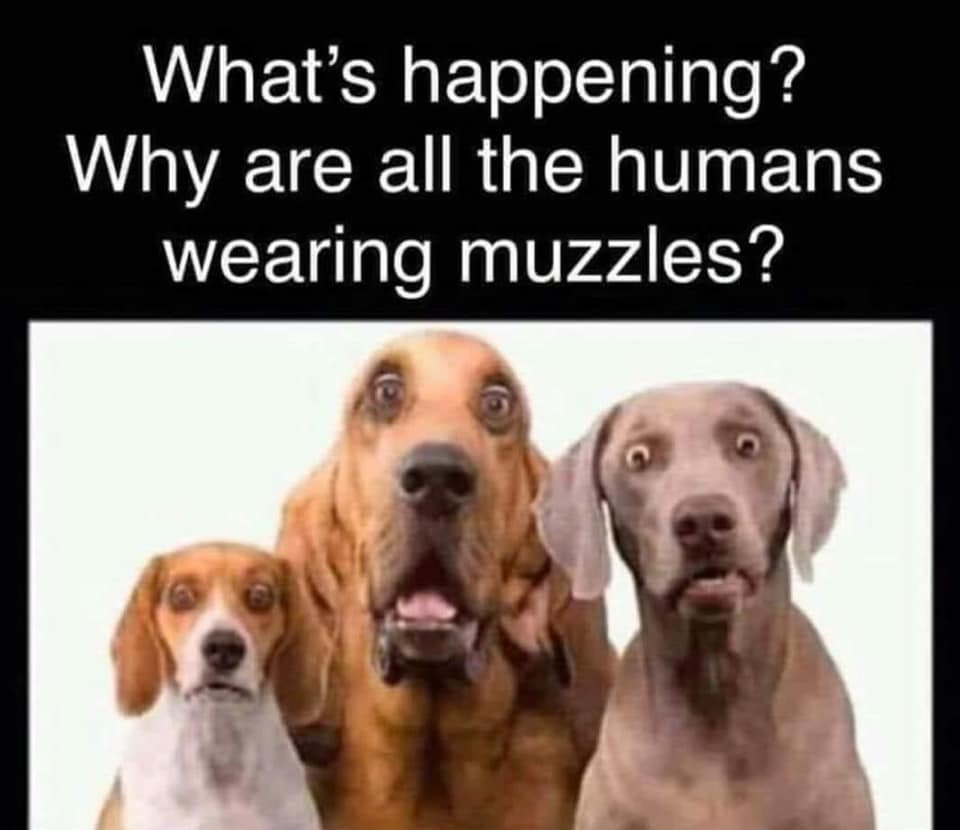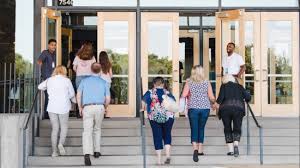If you know your Constitution, you already know the First Amendment can’t be canceled by “health concerns.” And now the U.S. Supreme Court agrees California churches can’t be prohibited from meeting indoors!
Here’s the news and my brief analysis:
Friday, February 5, just before 8 p.m. PST, the U.S. Supreme Court ruled in response to cases from two California churches (South Bay Pentecostal Church in Chula Vista and Harvest Rock Church in Pasadena).
The bottom line is six of the nine justices agreed that nowhere in California can government authorities prohibit houses of faith from holding indoor services.
As Politico reported: “The court blocked the prohibition on indoor worship services in the most hardly hit areas, but allowed some limitations based on capacity percentages to stay in place as well as a prohibition on singing and chanting during indoor services.”
Highlighting the positive, this means throughout California (from Purple Zone or “better”), no longer can cities and counties fine pastors or churches for holding indoor meetings. This decision provides real relief for oppressed pastors, such as Rob McCoy in Ventura County, Ché Ahn in Los Angeles County, Mike McClure in Santa Clara County, and other bold pastors, who have suffered tyrannical fines and lawsuits just for obeying the New Testament exhortation about “not forsaking the assembling of ourselves together.”
In response to this ruling, I urge every pastor who’s been reluctant to hold indoor meetings — go with the Bible, the First Amendment, and now the U.S. Supreme Court, and open your doors for meetings!
The U.S. Supreme Court split three ways — basically three constitutionalists on this issue (Thomas, Gorsuch, and Alito), three in the mushy middle (Barrett, Kavanaugh, and Roberts), and three non-constitutionalists (Breyer, Kagan, Sotomayor). But the Republican president’s nominees on the high court agreed there’s no justification for government’s zero tolerance for indoor church meetings. And more arguments about singing and full capacity will continued to be argued in federal court in California.
Here is the court’s opinion and its summary paragraph, which is a bit technical. The point is the first sentence, stating that the respondents (Gavin Newsom, Xavier Becerra, etc.) are enjoined (stopped) from prohibiting “indoor worship services”:
“Respondents are enjoined from enforcing the Blueprint’s Tier 1 prohibition on indoor worship services against the applicants pending disposition of the petition for a writ of certiorari. The application is denied with respect to the percentage capacity limitations, and respondents are not enjoined from imposing a 25% capacity limitation on indoor worship services in Tier 1. The application is denied with respect to the prohibition on singing and chanting during indoor services. This order is without prejudice to the applicants presenting new evidence to the District Court that the State is not applying the percentage capacity limitations or the prohibition on singing and chanting in a generally applicable manner.”
Here are reports on the court’s ruling by Liberty Counsel and SCOTUSblog.
It’s worth reading the opinion of Neil Gorsuch:
Statement of JUSTICE GORSUCH, with whom JUSTICE THOMAS and JUSTICE ALITO join.
Often, courts addressing First Amendment free exercise challenges face difficult questions about whether a law reflects “‘subtle departures from neutrality,’” “‘religious gerrymander[ing],’” or “impermissible targeting” of religion. Church of Lukumi Babalu Aye, Inc. v. Hialeah, 508 U.S. 520, 534–535 (1993). But not here. Since the arrival of COVID–19, California has openly imposed more stringent regulations on religious institutions than on many businesses. The State’s spreadsheet summarizing its pandemic rules even assigns places of worship their own row. See App. to Emergency Application for Writ of Injunction, App. G–3. At “Tier 1,” applicable today in most of the State, California forbids any kind of indoor worship. Meanwhile, the State allows most retail operations to proceed indoors with 25% occupancy, and other businesses to operate at 50% occupancy or more. See ibid; see also _ F. 3d _, 2021 WL 222814, App. A (CA9, Jan. 22, 2021). Apparently, California is the only State in the country that has gone so far as to ban all indoor religious services. See Brief for Becket Fund for Religious Liberty as Amicus Curiae, 5–6.
When a State so obviously targets religion for differential treatment, our job becomes that much clearer. As the Ninth Circuit recognized, regulations like these violate the First Amendment unless the State can show they are the least restrictive means of achieving a compelling government interest. _ F. 3d, at _, 2021 WL 222814, *9.
In cases implicating this form of “strict scrutiny,” courts nearly always face an individual’s claim of constitutional right pitted against the government’s claim of special expertise in a matter of high importance involving public health or safety. It has never been enough for the State to insist on deference or demand that individual rights give way to collective interests. Of course we are not scientists, but neither may we abandon the field when government officials with experts in tow seek to infringe a constitutionally protected liberty. The whole point of strict scrutiny is to test the government’s assertions, and our precedents make plain that it has always been a demanding and rarely satisfied standard. See Lukumi, 508 U. S., at 546. Even in times of crisis—perhaps especially in times of crisis—we have a duty to hold governments to the Constitution.
Still, California says it can thread the needle. It insists that religious worship is so different that it demands especially onerous regulation. The State offers essentially four reasons why: It says that religious exercises involve (1) large numbers of people mixing from different households; (2) in close physical proximity; (3) for extended periods; (4) with singing.
No one before us disputes that factors like these may increase the risk of transmitting COVID–19. And no one need doubt that the State has a compelling interest in reducing that risk. This Court certainly is not downplaying the suffering many have experienced in this pandemic. But California errs to the extent it suggests its four factors are always present in worship, or always absent from the other secular activities its regulations allow. Nor has California sought to explain why it cannot address its legitimate concerns with rules short of a total ban. Each of the State’s shortcomings are telltale signs this Court has long used to identify laws that fail strict scrutiny. See, e.g., First Nat. Bank of Boston v. Bellotti, 435 U. S. 765, 793 (1978) (The State’s proffered “purpose is belied, however, by the provisions of the statute, which are both underinclusive and overinclusive.”).
Consider California’s arguments in turn. The State presumes that worship inherently involves a large number of people. Never mind that scores might pack into train stations or wait in long checkout lines in the businesses the State allows to remain open. Never mind, too, that some worshippers may seek only to pray in solitude, go to confession, or study in small groups. See Harvest Rock Church, Inc. v. Newsom, App. to Emergency Application for Writ of Injunction, No. 20A137, Exh. A, No. 20–56357, p. 4, n. 1 (CA9, Jan. 25, 2021) (O’Scannlain, J., specially concurring). Nor does California explain why the less restrictive option of limiting the number of people who may gather at one time is insufficient for houses of worship, even though it has found that answer adequate for so many stores and businesses.
Next, the State tells us that worshippers are sure to seek close physical interactions. It touts its mild climate, too, suggesting that worshippers might enjoy more space outdoors. Yet, California is not as concerned with the close physical proximity of hairstylists or manicurists to their customers, whom they touch and remain near for extended periods. The State does not force them or retailers to do all their business in parking lots and parks. And California allows people to sit in relatively close proximity inside buses too. Nor, again, does California explain why the narrower options it thinks adequate in many secular settings—such as social distancing requirements, masks, cleaning, plexiglass barriers, and the like—cannot suffice here. Especially when those measures are in routine use in religious services across the country today.
California worries that worship brings people together for too much time. Yet, California does not limit its citizens to running in and out of other establishments; no one is barred from lingering in shopping malls, salons, or bus terminals. Nor, yet again, has California explained why more narrowly tailored options, like a reasonable limit on the length of indoor religious gatherings, would fail to meet its concerns.
When it comes to each of the first three factors, California singles out religion for worse treatment than many secular activities. At the same time, the State fails to explain why narrower options it finds sufficient in secular contexts do not satisfy its legitimate interests. Recently, this Court made it abundantly clear that edicts like California’s fail strict scrutiny and violate the Constitution. See Roman Catholic Diocese of Brooklyn v. Cuomo, ante, at _ (per curiam). Today’s order should have been needless; the lower
courts in these cases should have followed the extensive guidance this Court already gave.1
1 While today’s case concerns the total ban on indoor worship found in “Tier 1,” nothing in our order precludes future challenges to the other disparate occupancy caps applicable to places of worship, particularly in “Tiers” 2 through 4. See App. to Emergency Application for Writ of Injunction, App. G–3.
If I have a quibble with the Court’s order, it is with how it addresses California’s final factor, singing. While the Court’s order requires California to allow churches to open, it also permits California to enforce, for now, a categorical ban on singing during services. This much might seem understandable. California has sensibly expressed concern that singing may be a particularly potent way to transmit the disease, and it has banned singing not just at indoor worship services, but at indoor private gatherings, schools, and restaurants too.
But, on further inspection, the singing ban may not be what it first appears. It seems California’s powerful entertainment industry has won an exemption.2 So, once more, we appear to have a State playing favorites during a pandemic, expending considerable effort to protect lucrative industries (casinos in Nevada; movie studios in California) while denying similar largesse to its faithful. See, e.g., Calvary Chapel Dayton Valley v. Sisolak, 591 U. S. , 2020) (GORSUCH, J., dissenting from denial of application for injunction relief).
2 There is some confusion over what rules actually apply to Hollywood but I would not allow the government officials who created California’s complex regime to benefit from its confusing nature. The district court did not address the singing ban, and the Ninth Circuit applied rational basis review because it was not convinced that anyone is permitted to sing indoors in California. _ F. 3d., _, 2021 WL 222814, *18 (CA9, Jan. 22, 2021). But the record suggests that music, film, and television studios are permitted to sing indoors. See Record in No. 20–56358, Doc. 18–4, p. 124 (CA9) (decl. of Screen Actors Guild General Counsel) (“Singing in larger groups [inside the studio] is permitted but only . . . with additional protections.”). California’s most recent edict prohibits singing at “private” “social situations” as well as “activities protected by the First Amendment to the extent they are not already permitted by other guidance.” California Dept. of Public Health, Guidance for the Prevention of COVID–19 Transmission for Gatherings (updated Nov. 13, 2020). No one seems to know exactly how far this language stretches, but it seems unlikely to apply to the entertainment industry, which has its own governing guidance. And California does not squarely deny as much here. See Brief in Opposition 51–52, and n. 52. As the Court recognizes, though, nothing in today’s order precludes future relief on this claim either.
Once more, too, the State has not explained how a total ban on religious singing is narrowly tailored to its legitimate public health concerns. Even if a full congregation singing hymns is too risky, California does not explain why even a single masked cantor cannot lead worship behind a mask and a plexiglass shield. Or why even a lone muezzin may not sing the call to prayer from a remote location inside a mosque as worshippers file in. The Ninth Circuit sought to defend California’s uneven regime by observing that the entertainment industry has adopted COVID–19 testing protocols. See _ F. 3d., at _, 2021 WL 222814, *13. But, if that’s true, it is unclear why California’s religious institutions might be denied a similar opportunity. Rather than assume such testing is infeasible, California might have at least offered the option, or sought to adapt it to churches. In my view, the State must do more to tailor the requirements of public health to the rights of its people. The Court’s order today at least allows the applicants to press
these points on remand.
No doubt, California will argue on remand, as it has before, that its prohibitions are merely temporary because vaccinations are underway. But the State’s “temporary” ban on indoor worship has been in place since August 2020, and applied routinely since March. California no longer asks its movie studios, malls, and manicurists to wait. And one could be forgiven for doubting its asserted timeline. Government actors have been moving the goalposts on pandemic-related sacrifices for months, adopting new benchmarks that always seem to put restoration of liberty just around the corner. As this crisis enters its second year— and hovers over a second Lent, a second Passover, and a second Ramadan—it is too late for the State to defend extreme measures with claims of temporary exigency, if it ever could. Drafting narrowly tailored regulations can be difficult. But if Hollywood may host a studio audience or film a singing competition while not a single soul may enter California’s churches, synagogues, and mosques, something has gone seriously awry.
The framers of our Constitution meant we were to have freedom of religion, not freedom from religion.
U.S. Christian evangelist Billy Graham






 RSS 2.0 Feed
RSS 2.0 Feed